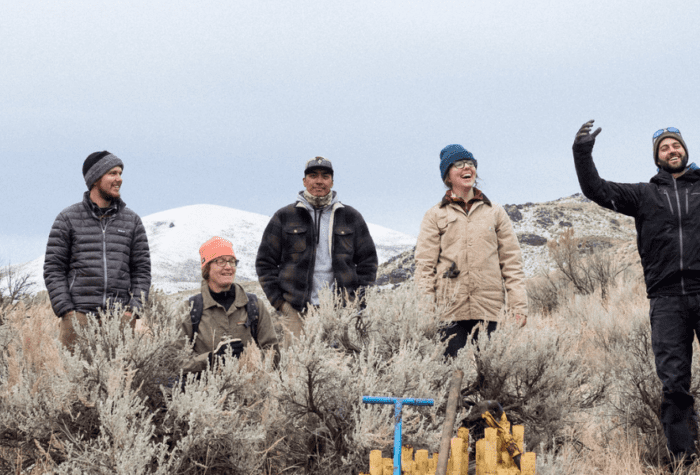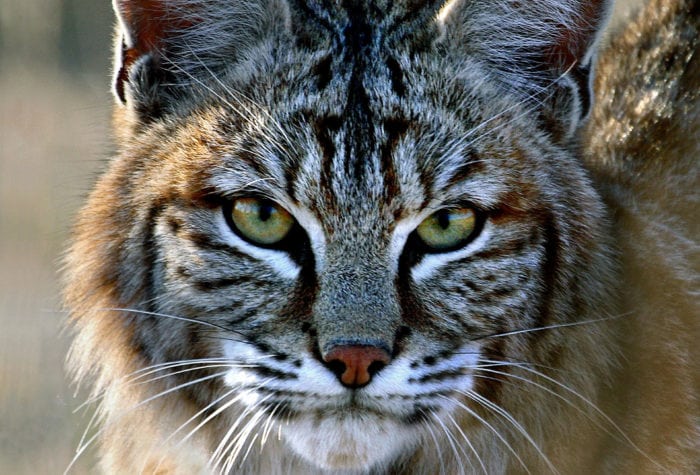Get to know the high desert
There’s a reason that thick books have been written about the sagebrush steppe ecosystem. It’s a complex place, shaped geologically over eons and modified daily by wind and rain.
As Jim Davis, who helped launch ONDA’s Wild Desert Calendar explained, “When I first began exploring the Great Basin desert landscape and Oregon’s desert in particular, I made increasing my knowledge of this ecosystem and its flora and fauna my first order of business.”
Volunteering with ONDA is a great way to get an in-depth introduction to places in this region. You can also use our website as a launching pad for learning about the region’s natural and cultural history.
Your knowledge will change what you find interesting in the landscape and what you then choose to photograph.
Study the masters to learn composition principles
One tried-and-true method to improve your own photography is to study work by the masters. You’ll find endless inspiration in the work of conservation photographers like Art Wolfe and Cristina Mittermeier. Look at their images with composition techniques in mind and ask yourself questions. Is the Rule of Thirds applied? Do diagonals and triangles add tension? Does the subject fill the frame, or is there negative space? Are there leading lines that focus your attention?
“The challenge is to use these elements and apply them to landscapes that are both new to your own eyes and, in many cases, have never had a serious landscape photo taken before,” said Davis.
Don’t be afraid to emulate the style of a photographer you admire as you shoot. As Davis said, “your own style will evolve.”
Choose your location strategically
With all the millions of acres to cover in Oregon’s high desert, how do you narrow down where to go?
You’ll find links to each of the regions that we want to see photos coming from at the bottom of our calendar submissions page.
As former ONDA board member Helen Harbin explained, “We really want photographers to explore Wilderness Study Areas in Oregon’s high desert.”
Harbin also had this advice as to what the ONDA calendar committee is not looking for: “We’re looking for untrammeled beauty, so we quickly move past photos with cheatgrass, powerlines and roads.”
Immerse yourself
Once you’ve arrived at a priority destination, the next step is to immerse yourself into that landscape.
David Hanson suggests that you walk into the scene you’re trying to capture: “I love the saying, ‘Your best zoom lens is your two feet.’”
As Hanson added, “Exploring is half the fun of good photography and good photography — even if only shared among friends — is a great way to draw positive attention to our public lands!”
Plan for the light
“Scout out your composition in advance and wait for the right light to illuminate your scene,” says Alan Majchrowicz, a professional nature and landscape photographer with three decades of experience.
Each day brings two best times to shoot:
- golden hour: shortly after sunrise or before sunset when light is soft and red
- blue hour: just before sunrise or just after sunset when light is diffused and even
These two periods are collectively known as “sweet light” and chances are good that the vast majority of your favorite images were taken during this time.
The harsh light of mid-day generally doesn’t yield great images, but Majchrowicz notes that “you can make some great images during midday — if conditions are right. Think dramatic clouds or approaching storms.”
Bracketing – taking several shots of the same subject using different exposures – is useful when it would be difficult to obtain a satisfactory image with a single shot.
“In high contrast scenes with sky or reflections, it’s best to expose for the brightest part of the image. There is a wealth of detail in the dark shadows that can be recovered in post-processing, not so much in overexposed highlights,” said Greg Burke, a long-time desert photographer who helped to establish ONDA’s annual calendar contest.
Be prepared
The Boy Scout motto – “Be prepared” – holds true for photography outings in the desert, too. Given the wild, remote nature of many places within Oregon’s high desert, our photographers also shared tips specific to shooting in this terrain.
“Some of the best desert locations are accessed via long unpaved roads which become impassable when wet, even for four-wheel drive vehicles, so you have to watch the weather,” said Majchrowicz, adding, “If you’re caught out unaware, it’s best to wait until the road dries out. You can’t rely on calling for a rescue due to poor to nonexistent cell service.”
Be patient
Perhaps more than anything else, great photography takes time.
Design firm owner and landscape photographer Bruce Couch made several trips to the Alvord Desert during a summer when the playa went through some unusual changes as a result of a wet winter. “In places where it was drying out slowly, the cracks were so clean they looked unreal.” Keeping that fact in mind and returning a few weeks after his first visit allowed Couch to capture a truly unique image of the playa.
As Couch said, “Being persistent and getting to know an area well will always help you get better images.

